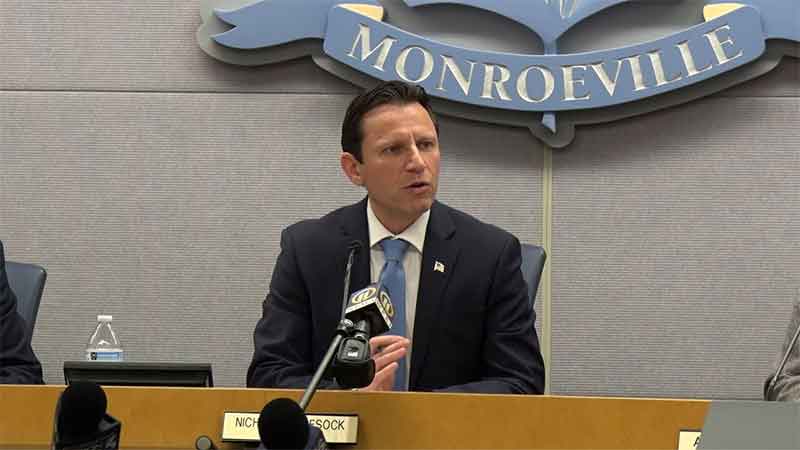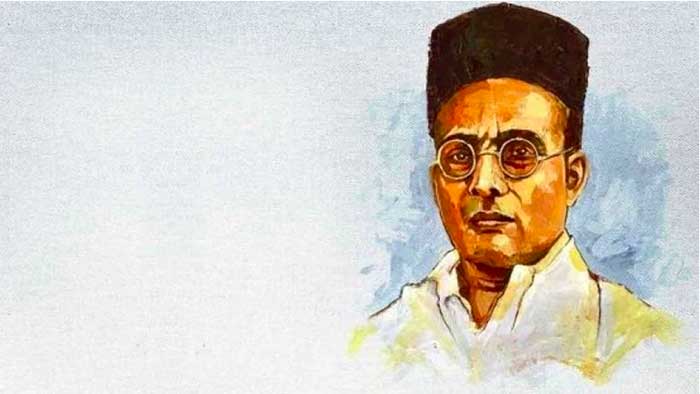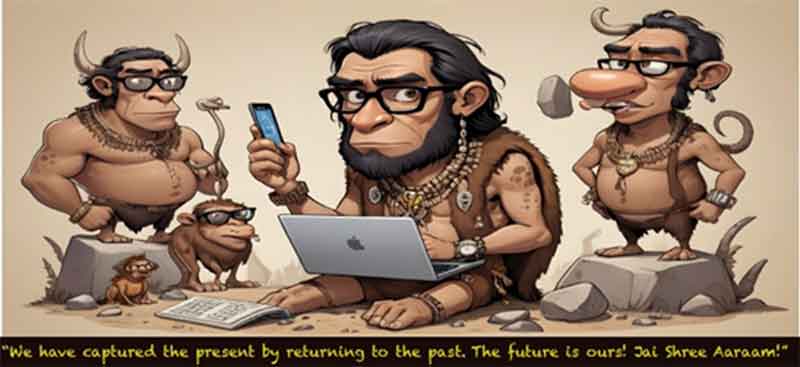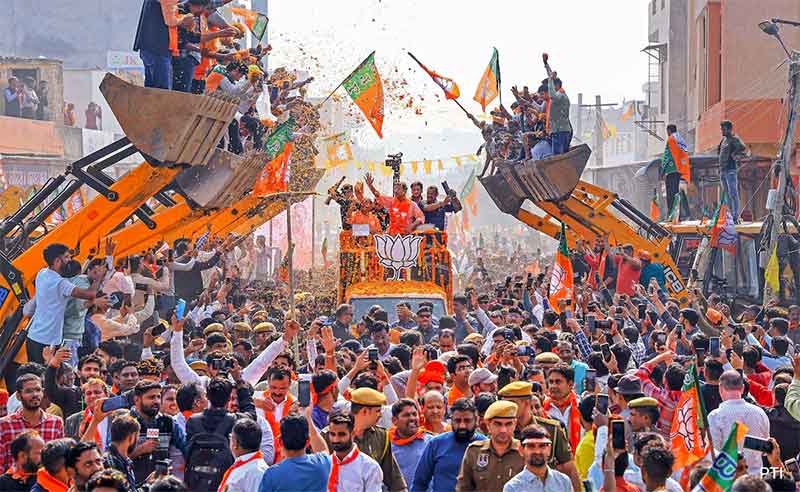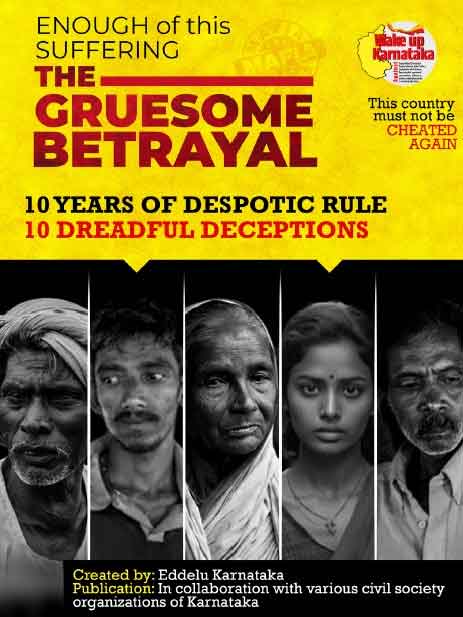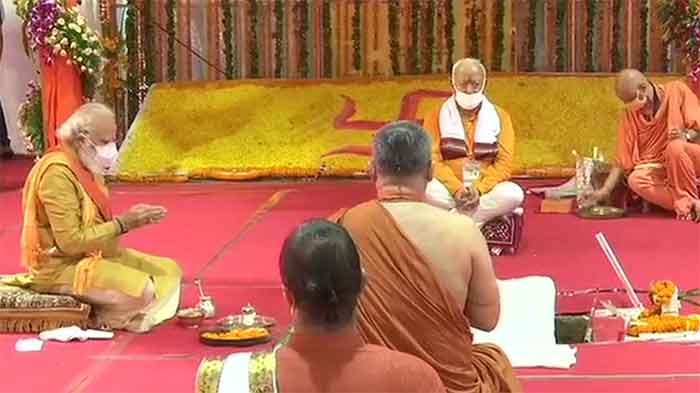
The BJP’s Rajya Sabha MP, Swapan Dasgupta, in an opinion piece titled The rise of the proud, global Hindu which appeared after the Aug 5 Bhoomi Pujan at Ayodhya, mentioned “the new Hindutva” that seems to have emerged in recent times. He contrasted it with the older Hindutva, identified with V. D. Savarker, describing that as “too ideological for popular taste.”
The new Hindutva, according to Dasgupta, “evolved after the post-liberalisation rise in living standards [and] blended cultural pride with a sense of national assertiveness.” Yet, even when describing the rise of a new Hindutva, Dasgupta employs descriptions and characterizations which have been the old Hindutva’s pet peeve and trope for a long time – the victimhood of the majority. For, Dasgupta marks the emergence of the new Hindutva as consisting in “the transformation of the meek Hindu and the submissive Hindu into a proud Hindu and even a global Hindu.”
According to Dasgupta’s claim, the enabling conditions of skewed material prosperity, post-liberalization, occasioned the rejuvenation of the Hindu spirit. So much for all the lofty ideals of Hinduism, so much for the exhortations of Hindu icons like Vivekananda who made impassioned pleas for the rebirth of the Hindu spirit based on the inherent greatness of the Hindu faith and culture. It seems it took neoliberal economic policies to release the inner tiger among the Hindus, if Dasgupta is to be believed.
The “meek and submissive” Hindu has been a tired and provocative attempt by Hindutva forces to stress the emasculation and disempowerment of the Hindus, chiefly under foreign rule. Such inaccurate and exaggerated descriptions bear the mark of V. D. Savarkar, who charted the trajectory of Hindus in the vast sweep of history and even held Buddhism responsible for weakening the moral fiber of the Hindus by its stress on no-violence.
What is to be noted, however, is where Dasgupta locates the hold and emergence of new Hindutva: among those who benefited from the post-liberalization bounty, India’s more affluent, middle and upper classes. In this, he seems to have a pulse of how things have evolved in the Hindutva space and he seems not too far from reality. One must also not ignore Dasgupta’s seemingly anachronistic mention of the weak and hurt Hindu.
Hurt by History
For, even though the new kids on the block are younger, professionally diverse, and politically perceptive, they still seem unable to shrug off old demons of having been dealt a raw deal in history.
However, while the new Hindutva and its adherents still nurse old wounds, they exhibit a certain brash confidence in projecting their views and in trying to deconstruct, with a modicum of method and analysis, what they consider as false views propagated till now. They might not openly push the idea of the Taj Mahal actually being Tejo Mahalya, a Shiva temple, as a previous generation of supposed scholars had proposed. But, they will try to chip away with questionable evidence, held up as new and revelatory, at the more established narratives of Indian history, say the story surrounding the king Ashoka.
In a show of having dabbled in diverse scholarship, presenters from this new Hindutva brigade, with backgrounds such as in finance and business, draw from the edicts on Asokan pillars, from supposed counter-narratives in Hathigumpha (which have a later Kalingan king, Kharavela’s, inscriptions) and entries in the Ashoka-avadana, a northern Buddhist biography of Ashoka which have him put to death members of the Ajivika sect after he had repented about Kalinga.
All to show that Ashoka was not the “nice guy” we’ve been made to believe in by colonial and modern (leftist) historians. It matters little to such presenters that the very points they accuse the modern leftist historians of ignoring and omitting are the ones that are taken up quite prominently in books authored by those historians!
In the age of social media, with media pieces marked as “6 minute reads” etc, in an age of the Chetan Bhagatization of Indian literature and the Devdutt Pattanaikization of India’s complex cultural past, people seem to want convenient summaries and rough-and-ready lowdowns on issues that are inherently multi-source and multi-causal. Not too many people will have time or inclination to read books, reports or lengthy analyses.
The simplistic distillations about matters of history, culture, faiths, belief-systems, sacred texts etc that are provided by many of those on the right who selectively cherry-pick information, often from dodgy sources on the internet and slap it all together, seems adequate to the curiosities of most of the audience. Truth, veracity and multi-layered discussions are not at a premium.
A striking case-in-point of this attraction of what is termed the “Whatsapp University” standards of information and analysis is a comparison and reception of two recent books on the Sarasvati civilization. One by an ex-serviceperson, G.D. Bakshi is sloppily written and produced, while the other, written by academic Michel Danino is infinitely better researched and argued. While both authors are very sympathetic to the Sarasvati civilization case, it is Bakshi with his more sensational – and rudimentary – attempt who is the darling of the right-wing crowds, snagging a speaking opportunity at JNU, no less.
Who makes up the new Hindutva?
That the emergence of the new Hindutva is fairly recent is a correct assessment by Dasgupta. While, in the popular imagination of left-liberals, typical Hindutva elements have been more of the trishul-talwar-brandishing variety, often dismissed as “fringe elements” (even by the Hindutva organizations themselves), other “clone armies” were slowly coming up in different parts of the country and the world.
These were often constituted by young professionals such educators, doctors, engineers, lawyers and business analysts. These joined forces with the old-guard in this space, who are also a motley crowd: software professionals, politically dead-end figures and even former military officers. Many of them are the beneficiaries of the post-liberalization economic change India witnessed, as Dagupta has observed. This is in addition to the usual posse of godmen and godwomen, of whom India never has any scarcity. Only, the current crop of these godly-persons have also amplified their reach via social media and readily provide the byte-sized, seemingly profound, nuggets of wisdom to confirm Hinduism’s ancient and incomparable character – with all kinds of modern relevance – to their audience, who are convinced they are hearing authentic traditional wisdom.
The new batch of the Hindutva-curious and Hindutva-adherents are primarily social-media savvy. Having endlessly griped about the media space being taken up by the left-liberals till now, they have set up a wide-variety of their own media outlets on popular social media platforms. Gone are the days when the Organizer or the Pancajanya had to bear the burden of broadcasting the Sangh’s views.
Now there are any number of youtube channels, facebook pages, and even podcasts and websites that openly engage with the broad concerns of Hindutva or some form of religious nationalism.
While organizations like the RSS and the ABVP have provided opportunity for the younger aspirants of the right from a very long time, what marks the new Hindutva is the extra-party nature of much of the efforts by the younger generation. These people frequently espouse the BJP and its leaders, yet they are often grouped into their own collectives, taking advantage of a kind of autonomy that social media allows them.
The battle over intellectual space
We’ve all heard of the vicious and ubiquitous right-wing trolls that have bedeviled the Indian online space. But the new Hindutva is a slicker, more polished operation. It borrows not one but many leaves from what they see as the playbook of the left.
Primarily, this new Hindutva is taking aim at intellectual space as already mentioned above, which they feel has been dominated by “leftist historians and intellectuals.” This is a sentiment that gained currency when the issue of Ayodhya shifted to the courts, and matters of evidence came to the fore. Since the evidence sought and produced was of a nature that involved historical documents, details of material artifacts like buildings and architectural styles, and the results of archaeological explorations to determine the genealogy of the disputed site, it necessarily included the role of “area experts.”
This thrust various academics to the fore and two sides arrayed against one another. One argued against the presence of a temple beneath the mosque and connected issues like the actual location of Rama’s birth-place, the historicity of Rama and of Rama-worship. The other side took the opposite view.
The confrontations between these actors, mainly academics, involved such disciplines as history, architecture, archaeology, epigraphy, languages especially Sanskrit and Persian, and the consultation of religious texts such as the puranas and mahatmayas.
Those who questioned the contention of a Rama temple beneath the mosque and those who questioned Rama’s existence as a historical figure, among other issues, were dubbed the “leftist historians.” None other than BJP ideologue Arun Shourie authored a book on several of these historians. The idea gained currency that such historians and other intellectuals were deliberately trying to subvert Indian history by questioning the beliefs of the Hindus, and thus were anti-Hindu.
But what also struck many on the right was a notion of the hold of such leftist historians and intellectuals in the intellectual spaces and their influence in crafting the narratives of Indian history and culture. Books authored by the leftist academics were classics in academic institutions and several of these academics were involved in the writing of school textbooks also.
The emergence of the new Hindutva
In the late 1990s and early 2000s, in the United States, some Indian-Americans had started challenging the works of Western scholars who wrote on issues dealing with Indian religions, including Hindu deities, and on religious figures (e.g. Ramakrishna). These Indian-Americans used early internet websites and message boards to propagate their views and attack what they saw as Western scholarship’s deliberately disrespectful stance towards the Hindu religion.
The distrust with academia and the intellectual class, both in India and abroad, soon became widespread in the Hindutva-sympathetic circles. It is a fact that representations of non-West by the West has been a contested issue for a while now. Edward Said’s classic book, Orientalism, attempted to deal with the outlines and the politics of such representation. In India’s case, colonial representations were often problematic as they employed stereotypes to describe several episodes of Indian history and to characterize various Indian practices.
Incidents like the Ayodhya confrontation and also the perceived transgressions by western scholarship provided the impetus for the next steps in the new Hindutva strategizing. The feelings of unfair representation of the Hindu religion crystallized into plans to create inroads into the so-called liberal bastions, especially universities.
Dharma Studies, Dharmic faiths and the age of right-wing think-tanks
One such endeavor was initiated under the rubric of various organizations promoting “Dharma Studies” in the United States. Such a program stressed the concept of dharma which undergirds Indian belief-systems and “as the lens through which to view faith and belief systems,” in the Indian context. This was to contrast the Indian systems from the other religious systems, especially the Abrahamic systems; the proponents of Dharma Studies insisted that Indian belief-systems could not be classified as religions in the western sense but must be viewed as “dharmic systems.”
Alongside, there were gradually constituted other think-tanks and research centers which carried out or facilitated their own studies on a wide variety of topics they deemed necessary for a new presentation of Indian history and culture. With the burgeoning social media, an ever increasing number of youtube channels and facebook pages undertook their own explorations and knowledge-making, as was mentioned earlier.
Such efforts often revolved around some key terms that the right has been employing to better convey ideas about Indian civilization and culture: Dharma, of course, but also, terms such as Vedic, Indic, Sanatana, and Indus-Sarasvati. There are also attempts to hark back to supposedly glorious institutions and epochs from the past, hence institutions and think tanks with names like Takshashila, Harappa, Chanakya etc found great resonance.
The think-tanks were serious affairs, funding and promoting a wide variety of studies, academic research-papers, investigations etc ostensibly focused on building a knowledge base of India “from an Indian point of view” and the bolstering of the Indian position as a “soft power.” The subtitle of one breathless piece in Fortune India in 2015 about this new phenomenon, “How a disparate set of individuals, NRIs, entrepreneurs, who-have-you, is changing the India narrative” tried to explain how the new narrative came about.
Suddenly, the “Khan Market” (and Lutyens’) crowd’s monopoly on spaces like the India International Center, India Habitat Center, sundry literary festivals, convocations, conferences, seminars, panel discussions etc was broken. Parallel spaces came to be utilized and intellectual gatherings organized on the lines of what were considered liberal configurations earlier, such as literary festivals, conferences, webinars etc.
There were different kinds of “Dialogs,” “LitFests,” “Festivals of Bharat” etc that mimicked the intellectual ostenations of the left-liberal elite earlier. They openly discussed provocative themes such as the left-wing student protests, the so-called selective outrage of the liberals and the difficulty of writing medieval history of India – just as the left sanctimoniously discusses the growing intolerance in the country or the cultural nationalism of the right!
Since a major concern of this new Hindutva was the correct representation of history, interest in the antiquity of various aspects of Indian history has been an obsessive feature of such conferences and social media explorations. Numerous talks and presentations have been made on the dating of the Mahabharata, for instance, with clues culled from putative astronomical references within the text. Other contentious issues, such as the origin and identity of the Aryans, and the facts behind the Sarasvati river are actively pursued.
But, in a sign of the times, and also in reaction to the challenges thrown up by Ambedkarite movements, there are gratuitous mentions of Dr. Ambedkar’s role in and as a maker of modern India. One frequent speaker on these platforms even recommends Dr. Ambedkar’s writings as part of his advice on required reading for his audience – especially Ambedkar’s thoughts on Article 370 and Pakistan, not surprisingly. Additionally, there are panel discussions on “The origins of the caste system,” and on untouchability, clearly demonstrating that the new Hindutva is trying, at least on the surface, to engage with the issue of caste which has been squarely laid at the door of Hinduism.
It is another matter altogether, that more often than not, such engagements end up in subverting the issue, as when some of their interlocutors seek to turn things on their head and charge Buddhism with creating the institution of untouchability, for example.
Despite the expected doses of Islamophobia, the time-worn accusations of appeasement of minorities, the non-stop lampooning of secularism, these new Hindutva efforts are at least exploratory. They don’t always exhibit the apoplectic and maniacal style of some well-known TV anchors who believe in browbeating their guests to steer the conversation in the direction they want. That said, even these new Hindutva-vadis always seem to be on a short fuse. The now popular term “whataboutery” is an apt way to describe many of their techniques to shut out arguments they do not like.
It is a strange mix then, a sort of passive-aggressive mode in which this new Hindutva operates. On the one hand they try to present an urbane, measured, data-driven, fact-based style of argumentation and engagement with thorny issues. On the other, they bare their fangs in moments of whataboutery outbursts when the mode of patient deliberation gets in the way of the points they want to prove.
The proliferation and reach of the new Hindutva
Regardless, they represent the “rise of the Hindu counter-sphere,” as a research paper terms the public expression of this new Hindutva. And what is more, this new Hindutva and its proponents are to be found in quarters one might have not expected, say, a decade ago. Or at least not have expected open expressions of the Hindutva sentiment in those quarters. But today, top engineering and business schools, social science institutions, research bodies, cultural organizations and the institutions of sports, cinema and theater are home to those whose heart beats to some kind of Hindutva sentiment. The Matrix does seem to be everywhere.
If the IITs have Ambedkar Study Circles, they also have Vivekananda Study Groups. It is hardly surprising the objection to recitation of Faiz should emerge from an IIT.
One can of course argue that India has always been a Hindu nation. That the most recent phase is merely a manifestation of a mass sentiment that was largely hidden or dormant earlier. Dr. Ambedkar was very aware of the political authority passing into the hands of a Hindu majority – or at least a Hindu elite – after India’s independence, and he therefore sought constitutional guarantees for the (religious) minorities.
That probably has a ring of truth to it, as those considered to be lower-caste can easily attest to. A pride and sense of privilege accruing from belonging to upper-caste Hindu statuses has always been a reality.
One should also keep in mind that there were projects on the archaeology of the Hindu epics conducted by the Archaeological Survey of India in post-Independence India which blurred lines of tradition and scientific exploration. In fact it was as part of such archaeological projects that ASI [or, more specifically, one of its directors, B.B. Lal] claimed the existence of a Ram temple beneath the Babri Masjid.
Such a pride and caste-privilege might not, however, have taken on a sharp nationalistic consciousness, and concomitantly assumed a bitter feeling of historic oppression earlier. It was in the propagation and insinuation of those kinds of emotions – a feeling of defeat, victimization and the resultant need for strident assertion – with the start of the Ram Janambhoomi agitation that the role of “political Hinduism” came to the fore.
That was still old Hindutva in the (ratha/chariot) driver’s seat. However, that tremendous polarization and resultant targeting of dispassionate narratives related to the nation’s history, culture and traditions seems to have fueled the push to carve out new intellectual territory and control.
According to Dasgupta, relative affluence post-liberalization also helped to inject some confidence into a newer generation. Such a generation mostly from the upper classes with access to the internet, found digital resources, space, and often anonymity on the web and social media to explore areas like their past and connect with like-minded people. One might say, employing language often used in another context, that the online radicalization of this new Hindu had begun. It was this initially small movement of those who could express their unhappiness with extant modes of representation of Indian history and its traditions that gradually burgeoned into the larger, new Hindutva reality that Dasgupta is speaking about.
What must be done
This is not all bad news. One must keep in mind that even in 2019, BJP was returned with less than 40% vote share (overall). Subsequently, it lost various state elections one after another.
The new Hindutva is an endeavor largely conceived of and managed by a privileged few who are funding institutions and organizations like think-tanks. Their vision is not grounded in the sentiment and ways of masses and they can only end up reproducing the social conditions they find themselves in.
Sure, they will act in various roles – not only as knowledge disruptors but as knowledge disseminators in a certain narrow band of the intellectual spheres they inhabit. But to grant them the power to fundamentally shift the terms of discourse on issues of identity, belonging, tradition and culture in India is to grant them more than they deserve.
Can the people who consider themselves progressive in matters of basic human relations and values engage meaningfully with issues of India’s traditions, its social cleavages and the complexities of its historical experiences? Can they talk about notions like aastha – “(religious) belief” – and dharma/dharmic/dhamma without being condescending and dismissive – and not let the right hijack those rich and profound ideas?
It is the general view that the so-called left has already ceded the space of faith, belief, tradition, etc. at the altar of a supposed godless revolution. But someone as steeped in modern western social and political thought as Dr. Ambedkar understood the inclinations of so many of the people who looked up to him. He did not belittle their spiritual concerns. He evaluated Marx and Buddha. He relentlessly engaged with the Buddhist suttas as he did with the works of social theorists, historians and legal scholars. He dealt with the many meanings and notions of dharma, for example in his piece, Philosophy of Hinduism. If he was to contend with people who wanted to quote sacred books and concepts in them in their defence, then he was well prepared to see through their chicanery and posturing.
One need not think of trying to pander to those who arrogate to themselves the rights to interpret history, tradition and culture for reasons of bigotry, historical vengeance and cultural nationalism. But one must try to have the language and intellectual apparatus to be able to articulate terms and ideas grounded in existing realities. This means being able to offer well-reasoned and grounded narratives that can connect with the people and their concerns. In that way the vital space that matters of faith, culture, traditional practices occupy in people’s lives can be engaged with in a balanced and informed way. In that manner common communitarian legacies of discussion, debate and disputation can be revived. And one can hopefully stop mourning the death of secularism.
Aviral Anand is a writer based in Delhi NCR
SIGN UP FOR COUNTERCURRENTS DAILY NEWSLETTER



